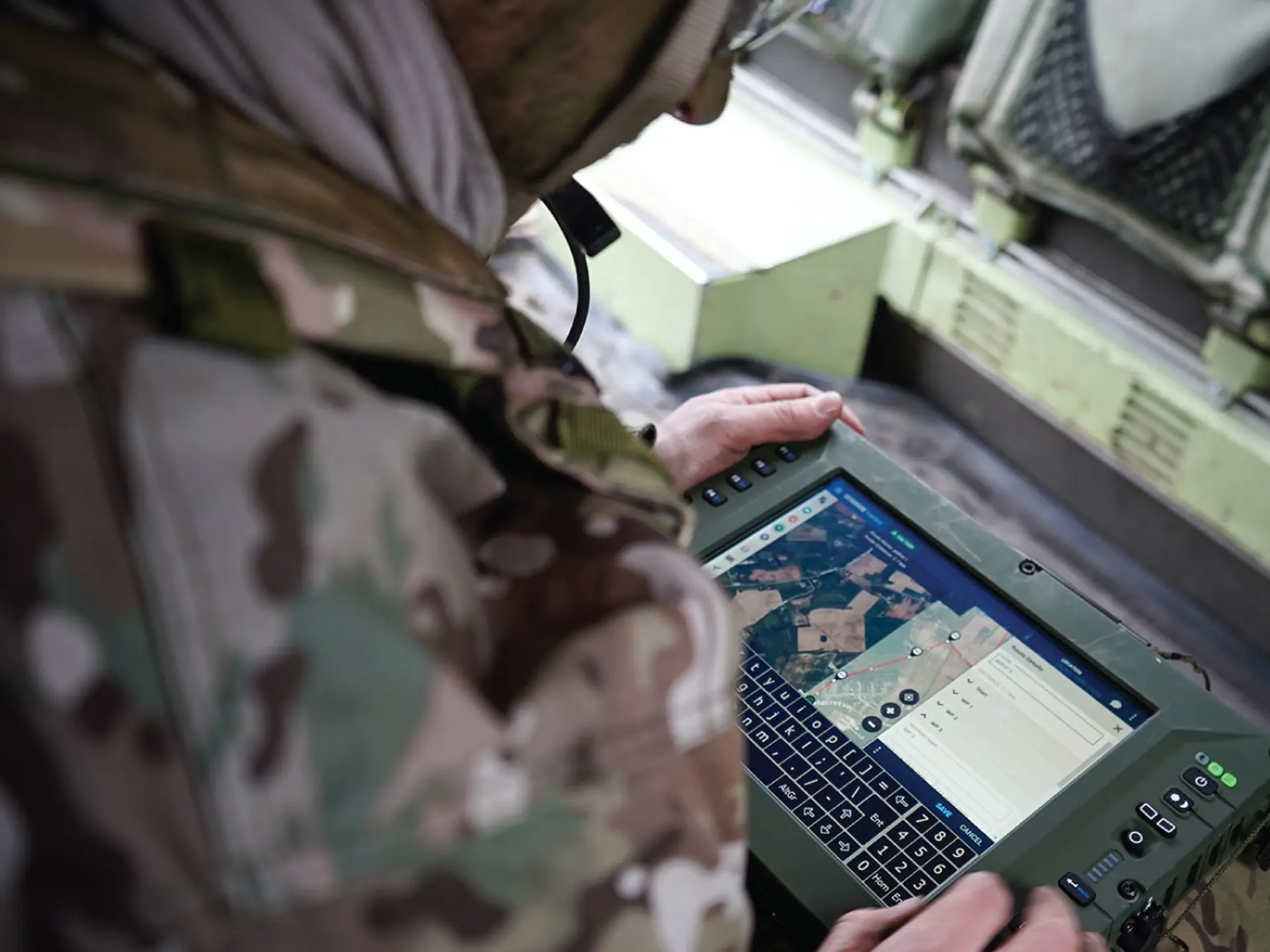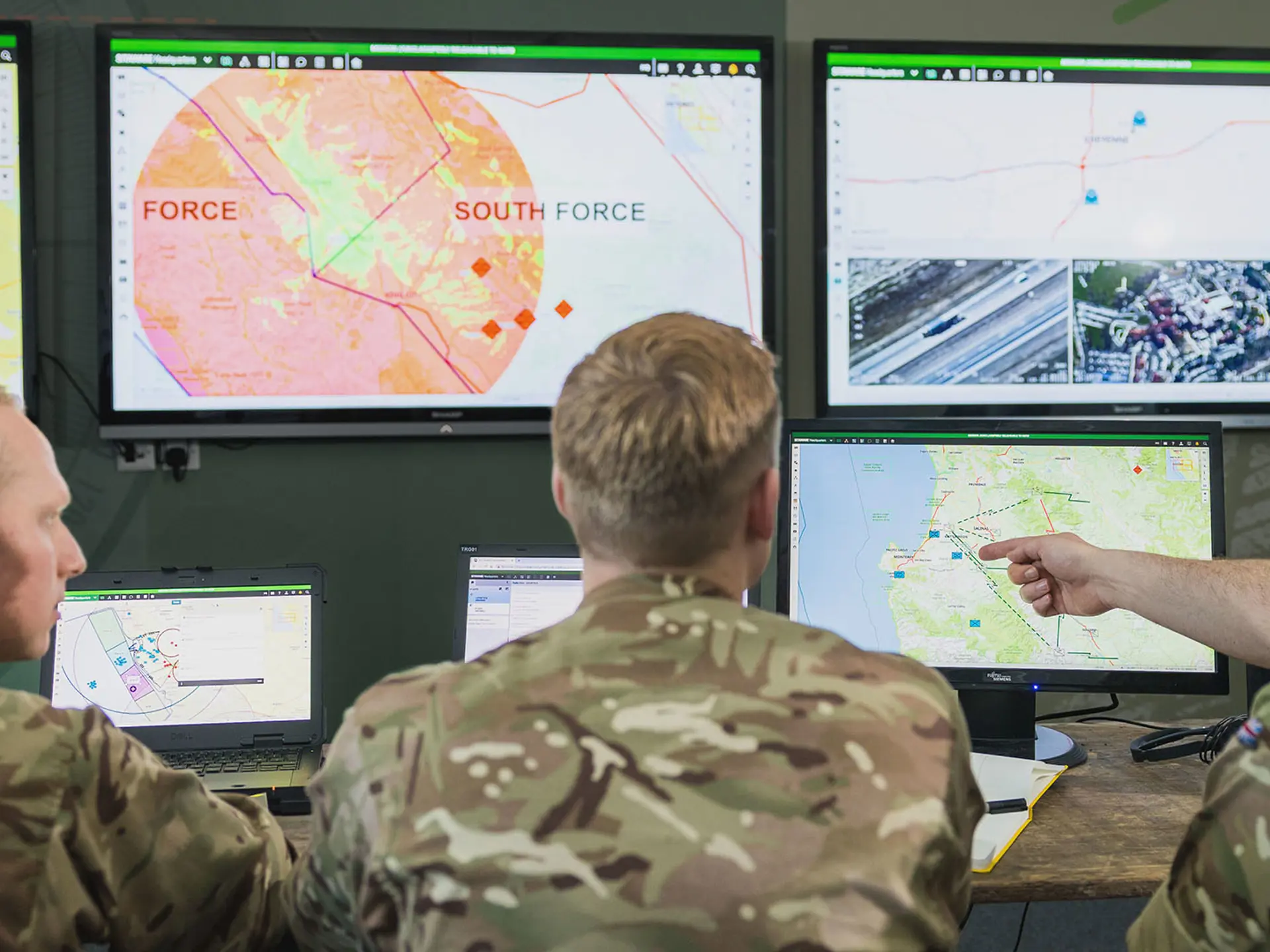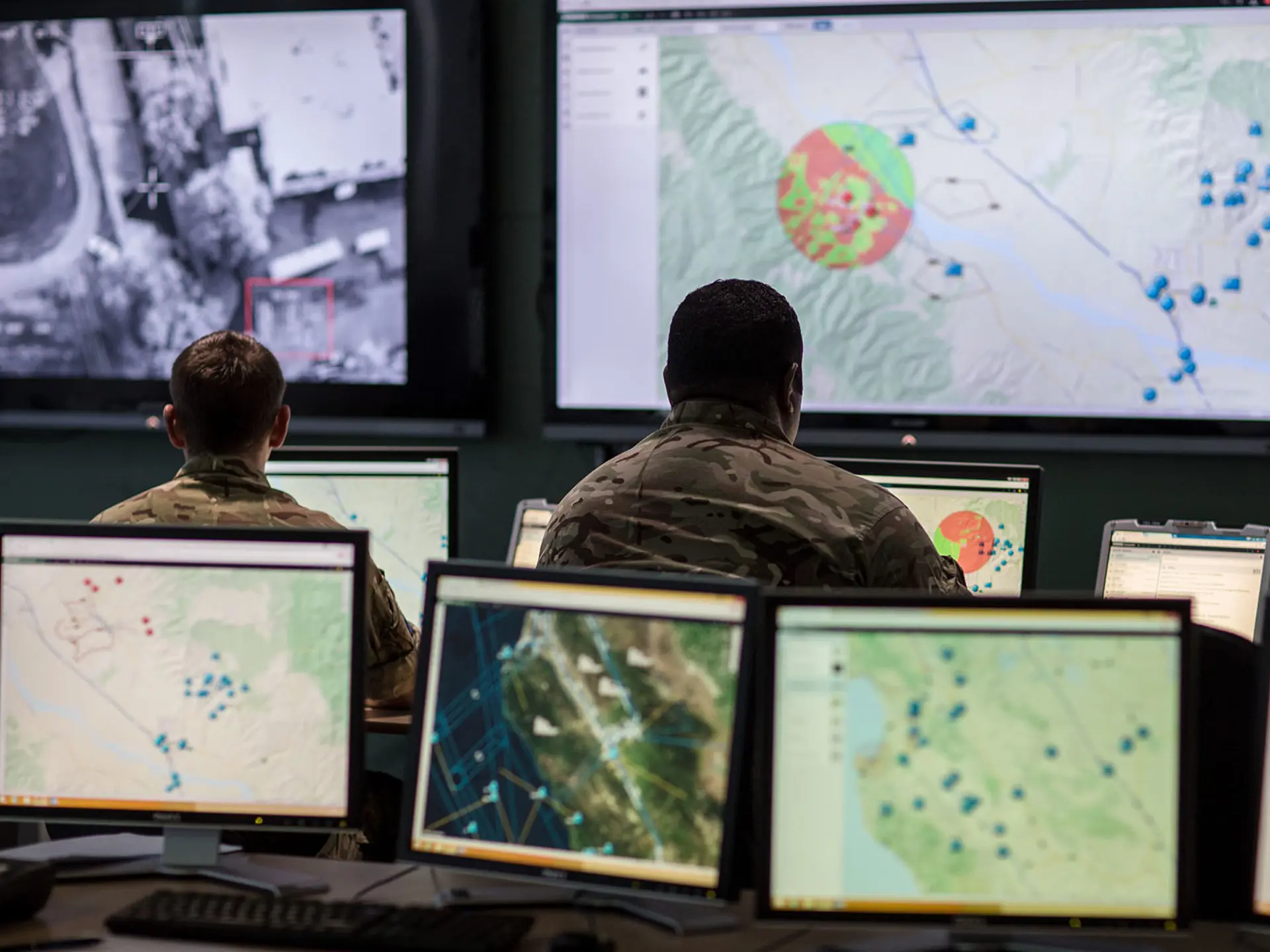Benefits of training in C4ISR
Investing in a C4ISR system leads to an array of benefits for the modern military organisation. However, your investment is worth nothing if your users are not able to adopt the system to carry out and support their work.
On this page, you can explore the importance and benefits of C4ISR training, and how to provide the best possible training for users operating military mission management and information systems.
Why is C4ISR training important?
Training in C4ISR is important because the operational demands for soldiers in combat are growing at a higher pace than ever. Tactical agility and the ability to transform battlespace data into valuable insights are essential for commanders. For that reason, user proficiency in the C4ISR systems that link units, vehicles, data, and coalitions and enable communication across all levels of command is imperative for succeeding on the contemporary front line.
On top of that, with many militaries facing fiscal constraints and experiencing high operational tempos, employing innovative pedagogical methods such as hands-on digital learning is a must to maintain skilled soldiers.
After software training
Source: TSIA
Active learning delivers the best training outcome
Active learning produces better educational outcomes at all levels compared to passive lecturing, according to a Harvard study from 2019. In an active learning environment, students are participating, thinking, discussing, investigating, and creating instead of idly listening. Although Harvard’s study was conducted in a university context, the U.S. Army Training and Doctrine Command note that active hands-on training is also an imperative principle in military training to maximise user proficiency and competence in, for example, a C4ISR system.
In a C4ISR context, active learning may come in the form of realistic exercises carried out by students in the actual C4ISR interface. By interacting in the C4ISR environment, the users are familiarising themselves with the system which they will use during actual operations, enhancing their C4ISR competencies, their ability to critically reflect on real-life scenarios, and their C4ISR-supported decision-making capabilities.
Interactive learning is 6 times more likely to help students learn
Taking learning digital
Facilitated by technology, digital learning departs the traditional classroom setting and leaves students in control of when and where to learn. The benefits of digital learning are manifold – from a user perspective, digital learning enables:
- Flexibility: Users can learn at their own pace and whenever they want to.
- Better engagement: Digital courses that incorporate hands-on learning enabled by software, videos, and animations are more engaging and may enhance learning outcomes compared to traditional classroom teaching.
On the managerial side, logistic and economic advantages of digital learning include:
- Scalability: The same digital training courses can easily be deployed to more users as training and learning needs develop.
- Cost-effectiveness: Digital learning cuts the resource costs of physical teaching.
- Progress tracking: Digitised learning can enable managers to track and plan user progression.









